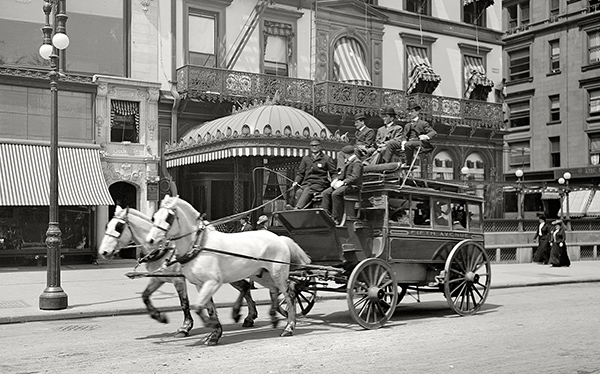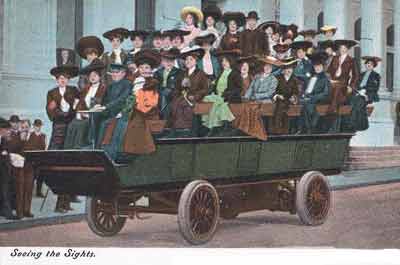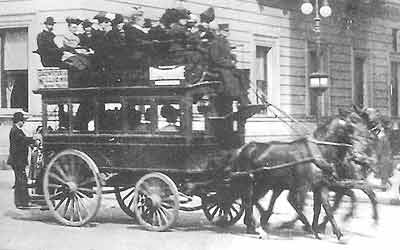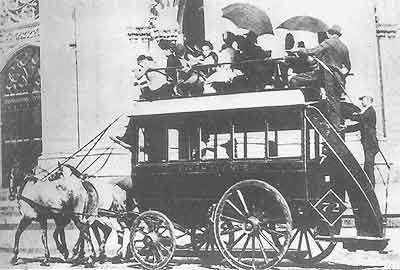
The masters and slaves in the GQ books do a lot of traveling by omnibus. The masters sit and the slaves stand in the aisle beside their seats. Historical omnibuses, whether horse-drawn or electric, would not have allowed for standing, or even aisles. Looking at pictures, there’s something of the clown car about them, absolutely crammed full of passengers.

The Fifth Avenue Coach Company tried electric omnibuses as early as 1898, and auditioned various motorized conveyances over the years, but used horse-drawn omnibuses until 1907, replacing the horses with 30-passenger “automobiles.”
The next pictures are closest to what I imagined, though with important differences.
I imagine the GQ omnibuses, whether horse-drawn or electric, as somewhat larger than these (which is perhaps unduly taxing on horses), with standing headroom and a side aisle wide enough for someone to pass a standing slave. They needed a redesign to accommodate slavery in the 20th century, just as the mansions were altered with slave rooms attached to every bedroom.

Some of the omnibus passenger compartments don’t look tall enough to stand up in, though I can find no evidence that people were crouching down to board various conveyances; anyway, as you can see, people preferred to sit up top.

I left the upper deck seating out of the story because, honestly, I just felt like the young masters would behave badly up top, and the idea annoyed me. So I didn’t give it to them as an option :D
Omnibus is Latin for “for all.” Henry would not know this, of course.
Fifth Avenue is the only avenue that never had streetcar tracks. The rich people who lived along Fifth would not tolerate unsightly rails so they were never laid.
Something I’m very curious about is when and why did people stop riding horses as transportation in the city? By 1900, people definitely just rode recreationally in Central Park. This change happened long before 1900, to be sure, but I’m unable to find any substantive information, so if anyone knows anything, I’d be most eager to learn it.

